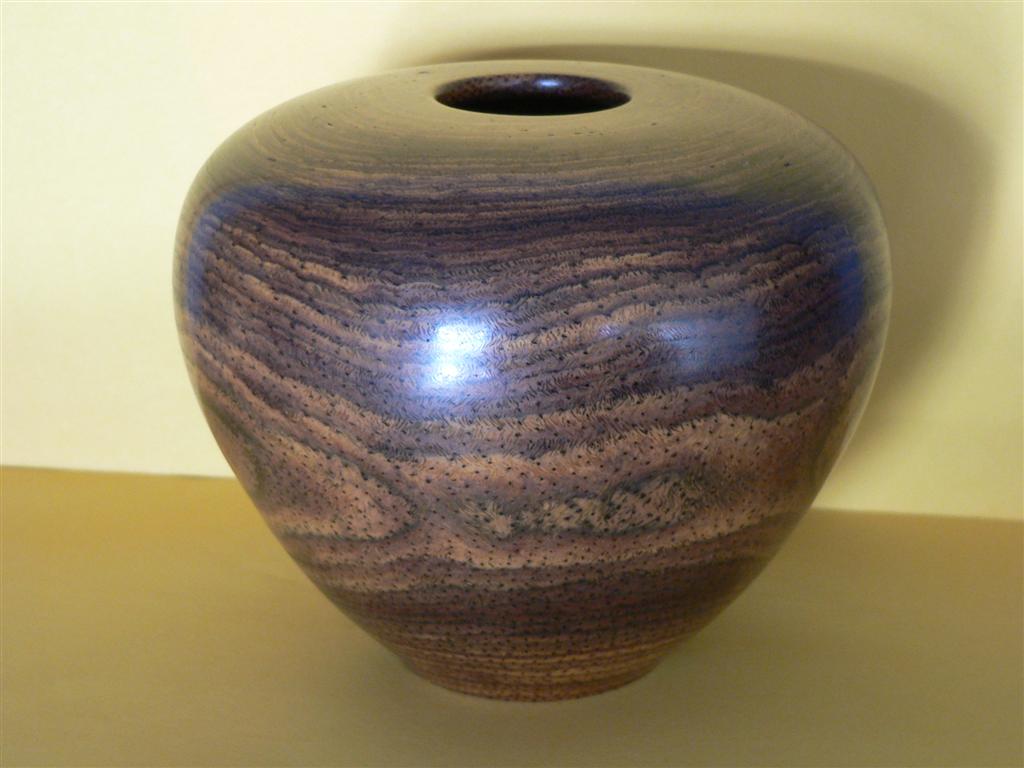Near our campsite there is a national park where there are thousands of Western Australian Grass Trees (Xanthorrhoea preissii) they look like this.

These are tall and spindly, usually they are about 2-3 times in diameter.
In the left foreground of this photo there is a one just emerging from the ground. The leaves are a spiky hard grass which is quite brittle and amazingly resistant. The trunk normally grows very slowly, about an half an inch per year, and it takes about 30 years just to get this emerging stage. The outside of the trunks are usually black from fires but the thick green grassy head survives bushfires and small animals sometimes hide from fires inside the grassy heads.
The trunk is composed of old leaf segments glued together by a red brown resin so is useless for milling.

The trunks are very fragile/britlle and are easily pushed over and very hard to grow outside their natural habitat but his one seems to have survived a serious fall.

This one is 21 ft high so if it has grown at 1/2" per year it is more than 500 years old

The large dry skirt of unburnt grass leaves around the green head suggests this tree has not been in a large fire for some time or local bushfires have been small and being so tall the dry skirt can survive the fire.
Even though the main trunk is useless for timber, the bases are prized by people like wood turners and speciality woodworkers who normally make items such as small lamp stands, bowls and platter and jewelry boxes.
Example here.
The sawdust contains a lot of resin so it produces a lot of fine dust when worked and most people are highly sensitive to the dust.
In very old trees like the above the harder base continues to extend up the tree. This base is about 4 ft long which is very unusual and would make it just millable for short boards - pity it's in a National Park.

These are tall and spindly, usually they are about 2-3 times in diameter.
In the left foreground of this photo there is a one just emerging from the ground. The leaves are a spiky hard grass which is quite brittle and amazingly resistant. The trunk normally grows very slowly, about an half an inch per year, and it takes about 30 years just to get this emerging stage. The outside of the trunks are usually black from fires but the thick green grassy head survives bushfires and small animals sometimes hide from fires inside the grassy heads.
The trunk is composed of old leaf segments glued together by a red brown resin so is useless for milling.
The trunks are very fragile/britlle and are easily pushed over and very hard to grow outside their natural habitat but his one seems to have survived a serious fall.
This one is 21 ft high so if it has grown at 1/2" per year it is more than 500 years old
The large dry skirt of unburnt grass leaves around the green head suggests this tree has not been in a large fire for some time or local bushfires have been small and being so tall the dry skirt can survive the fire.
Even though the main trunk is useless for timber, the bases are prized by people like wood turners and speciality woodworkers who normally make items such as small lamp stands, bowls and platter and jewelry boxes.
Example here.
The sawdust contains a lot of resin so it produces a lot of fine dust when worked and most people are highly sensitive to the dust.
In very old trees like the above the harder base continues to extend up the tree. This base is about 4 ft long which is very unusual and would make it just millable for short boards - pity it's in a National Park.


























































